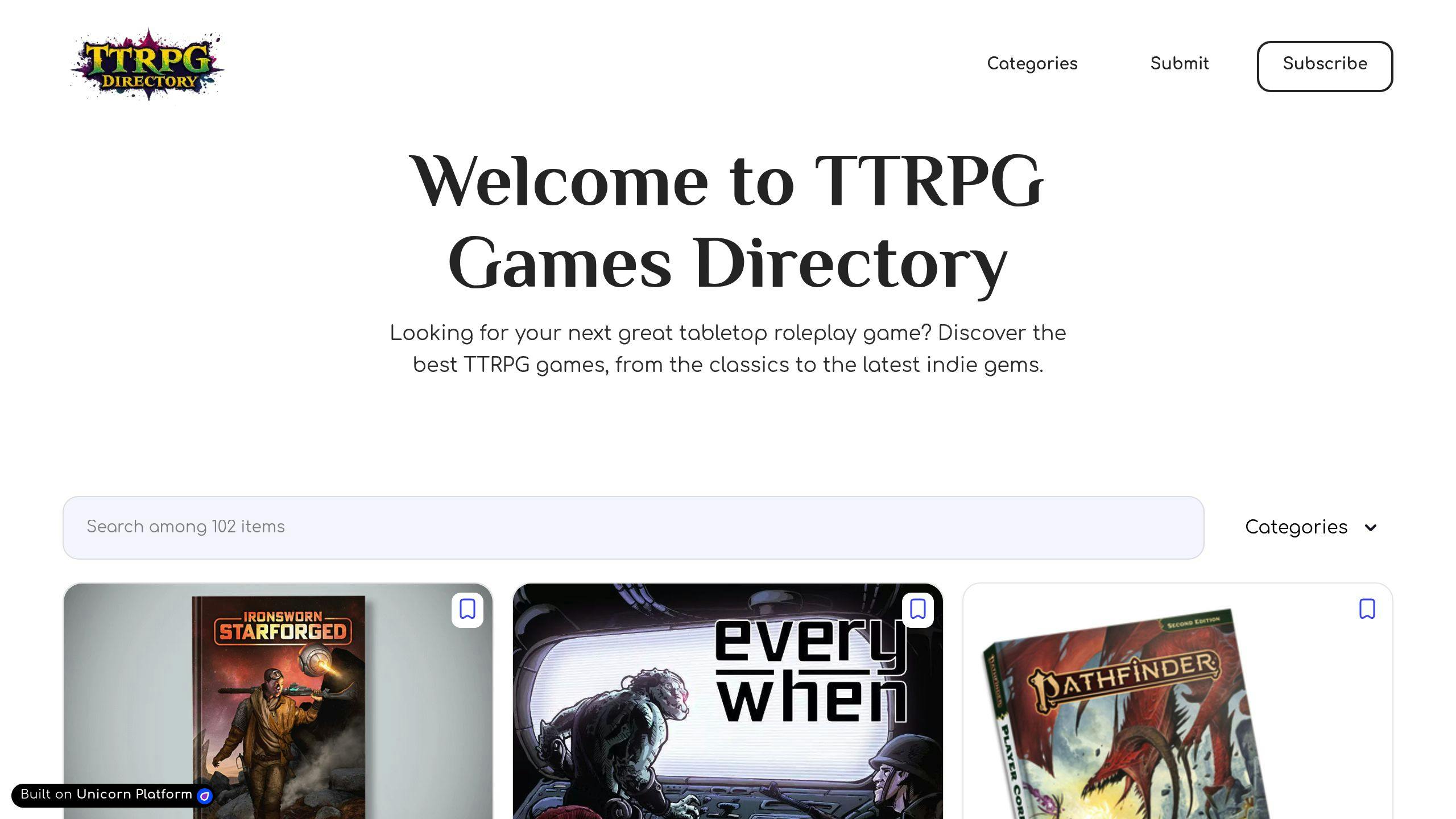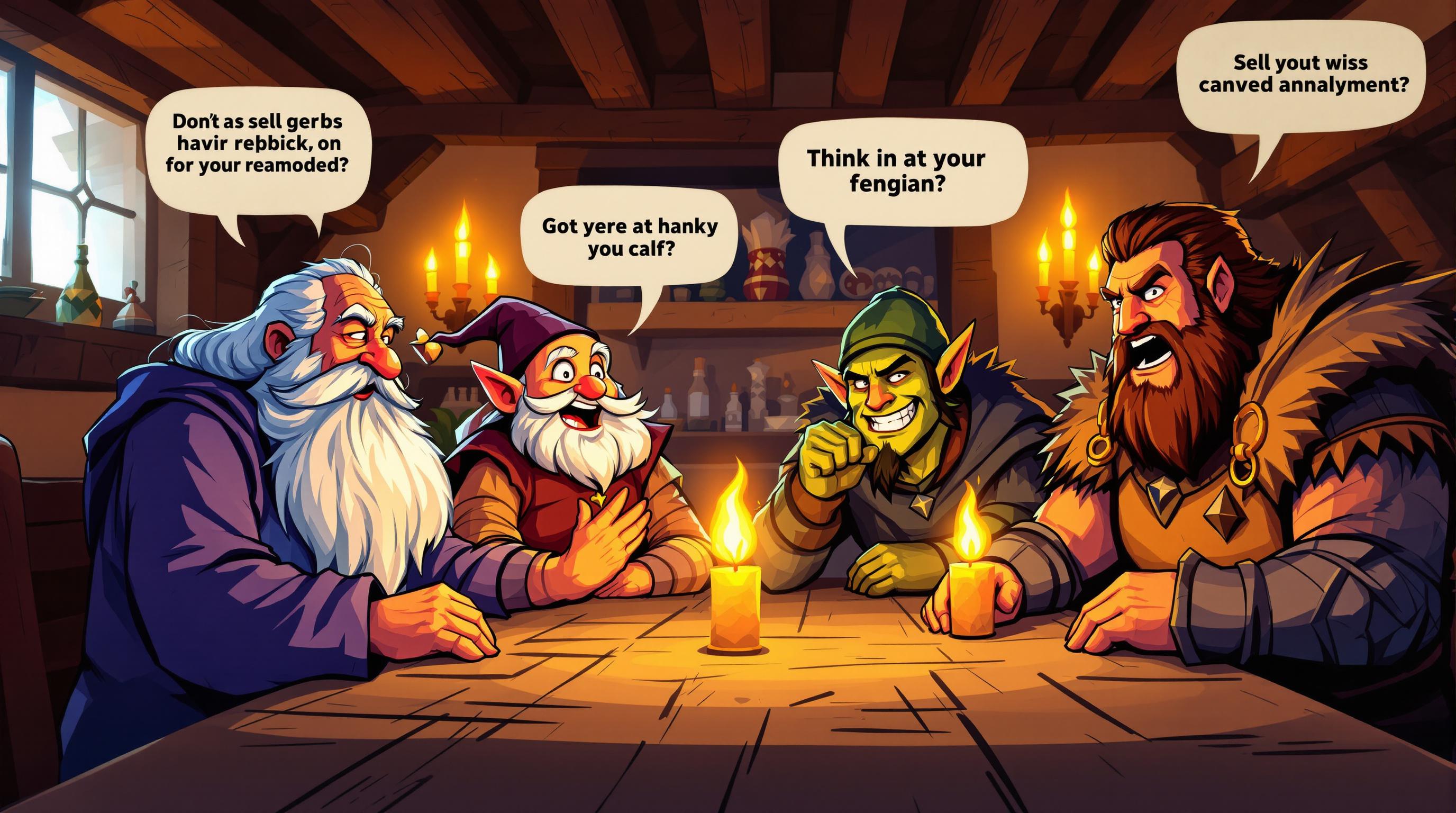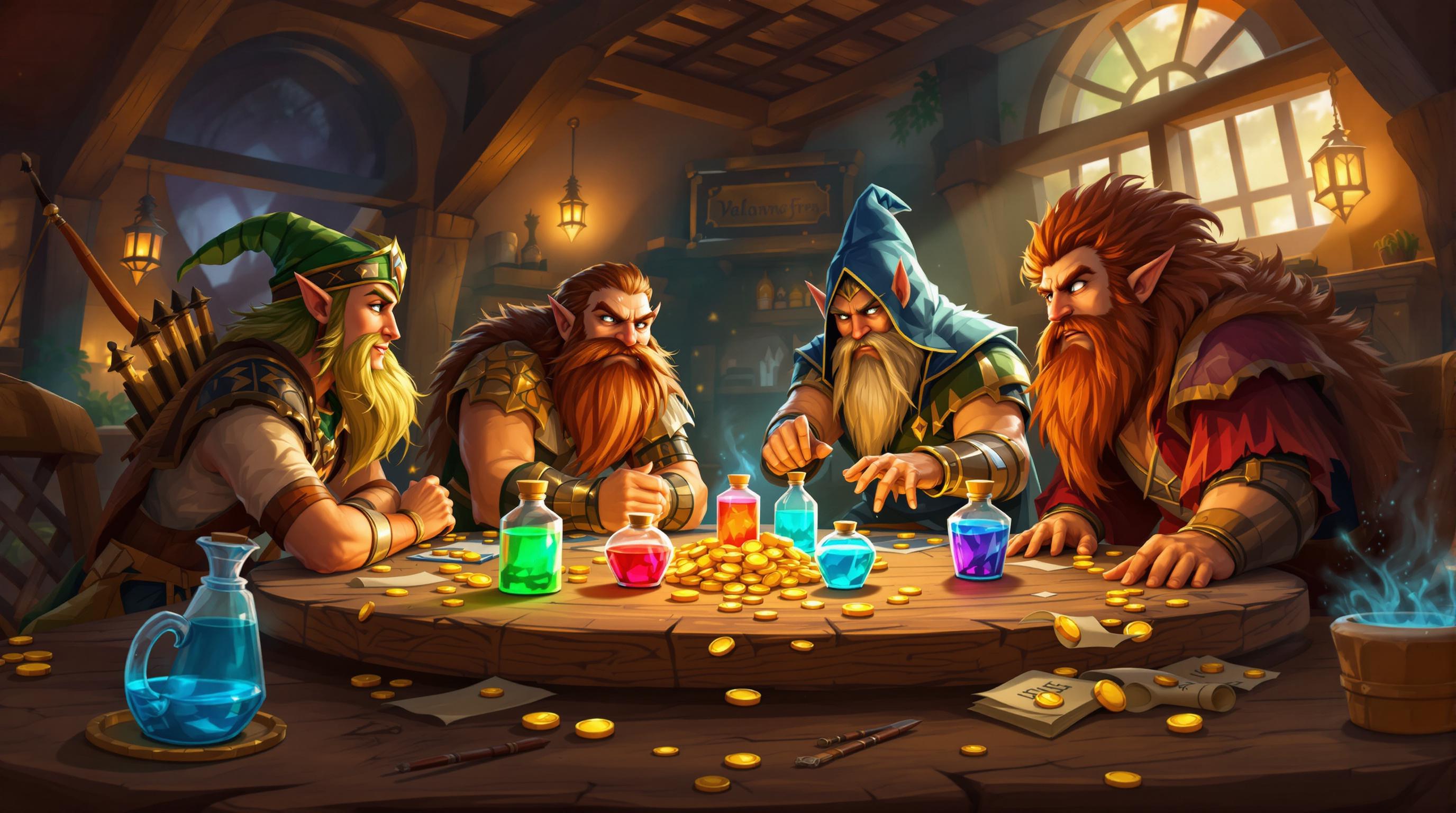Prestige paths in TTRPGs are advanced character progression options that allow players to specialize their characters beyond standard classes. These paths introduce unique abilities and require meeting specific prerequisites, such as skill levels, feats, or story-based achievements. Originating in D&D 3rd Edition as "prestige classes", they have evolved over time into systems like Paragon Paths in D&D 4th Edition or subclasses in D&D 5th Edition. Today, many TTRPGs use similar mechanics to enhance gameplay and storytelling.
Key Features of Prestige Paths:
- Entry Requirements: Specific criteria like minimum class levels, skill ranks, or narrative milestones.
- Unique Abilities: Specialized powers that distinguish characters, such as magical enhancements or stealth skills.
- Restricted Access: Available only to characters who meet prerequisites, adding depth and balance to progression.
Quick Comparison:
| Edition/System | Prestige Path Type | Access Level | Key Features |
|---|---|---|---|
| D&D 3.5/Pathfinder | Prestige Classes | Mid-level | Flexible, combines abilities |
| D&D 4th Edition | Paragon Paths | Level 11 | Tied to base class progression |
| D&D 5th Edition | Subclasses/Optional Systems | Early levels | Built-in customization |
Prestige paths are a great way to add depth to character growth, but they require careful balancing to ensure fairness and engagement for all players.
Prestige Classes in D&D 5e?
Main Elements
To understand prestige paths, it's crucial to grasp their key components, which set them apart from standard character progression in TTRPGs.
Entry Requirements
Prestige paths often come with specific entry requirements, such as:
| Requirement Type | Common Examples | Purpose |
|---|---|---|
| Class Levels | Minimum 5 levels in a specific class | Establishes a solid character base |
| Skills | Ranks in areas like stealth or diplomacy | Highlights areas of expertise |
| Feats | Specialized combat or magical abilities | Reflects focused character development |
| Story Elements | Membership in an organization, specific actions | Adds depth to the narrative |
These prerequisites ensure characters are ready to handle advanced abilities. For instance, the Assassin prestige class in D&D 3.5 demands sneak attack skills, poison proficiency, and certain skill ranks [2].
Special Powers
Prestige paths provide abilities that make characters stand out. For example, the Arcane Archer enchants arrows with magic, while the Shadowdancer uses shadows for stealth. These abilities not only enhance gameplay mechanics but also enrich the storytelling, showcasing each character's unique journey.
"Prestige classes can absolutely work in 5e as an opt-in framework for customized progression and specialization. But care must be taken to craft prestige options that enhance roleplay and storytelling first, with mechanics secondary." - Alex Maven [1]
Limited Access
Unlike standard classes, prestige paths are not freely available. This design choice creates:
- Opportunities for strategic planning
- Rewards for players who invest in character growth
- A stronger narrative impact while maintaining game balance
By restricting access, these paths ensure that powerful abilities are earned through effort and dedication, rather than being handed out early on [1].
These elements - entry requirements, unique powers, and restricted access - are the backbone of how prestige paths operate in TTRPG systems, setting the stage for the next section.
Prestige Paths in Major TTRPGs
Looking at how major TTRPG systems handle prestige paths gives us insight into their impact on gameplay and character growth.
D&D 3.5 and Pathfinder Systems
D&D 3.5 and Pathfinder set the stage for prestige class systems in modern TTRPGs. These systems introduced well-known prestige classes like the Eldritch Knight, Duelist, and Mystic Theurge. Each offered distinct combinations of martial and magical abilities or specialized combat skills [2]. To access these classes, characters had to meet specific prerequisites, such as skill levels, class features, or minimum character levels.
D&D 4th Edition Paragon Paths
With 4th Edition, the prestige system got a major overhaul through Paragon Paths. Unlike the more flexible prestige classes of D&D 3.5 and Pathfinder, Paragon Paths were closely tied to base class progression, resulting in a smoother advancement system. Characters gained access to these paths at level 11, signaling their entry into the paragon tier [2].
"Paragon paths and epic destinies in D&D 4th Edition are designed to be more structured and balanced, with each character able to choose one path and one destiny" [2]
Modern TTRPG Approaches
Today’s TTRPGs have moved away from traditional prestige classes. D&D 5th Edition replaced them with subclasses, focusing on character customization through other methods [1]. Many modern systems favor built-in subclass progression for better balance and flexibility. Others, like Pathfinder 2E, provide optional prestige-like systems that enhance storytelling without disrupting the flow of gameplay. Some games also tie character advancements to narrative milestones, blending mechanics with the story.
These shifts show how prestige paths have evolved, offering new ways to develop characters while keeping gameplay balanced and engaging.
sbb-itb-b8b00a5
Pros and Cons
Weighing the benefits and challenges of prestige paths can help both players and Game Masters decide how to integrate them into their campaigns effectively.
Character Growth Options
Prestige paths add depth to character progression by introducing specialized abilities and story-driven opportunities that go beyond standard class options. These paths often require characters to meet narrative-based prerequisites, like joining exclusive groups or completing specific quests, which ties their growth directly to the campaign's story. This approach not only enhances a character's abilities but also deepens their connection to the game's world and narrative.
Game Balance Issues
While prestige paths can elevate gameplay, they also come with potential balancing challenges. Modern systems have introduced ways to address these concerns without sacrificing their appeal. Here are some common issues and possible solutions:
| Concern | Description and Solution |
|---|---|
| Power Creep | Characters with prestige paths might outshine others. GMs can counter this by designing level-appropriate challenges and ensuring all players have equal opportunities for advancement. |
| Complexity Overload | New players might feel overwhelmed. Introducing prestige paths only after players are comfortable with the game's basics can help. |
| Min-Maxing | Some players may focus solely on optimizing stats at the expense of roleplay. GMs can counter this by emphasizing narrative prerequisites and rewarding story-driven achievements. |
To maintain balance, GMs can limit access to certain paths, enforce narrative prerequisites, adjust the difficulty of encounters, or provide alternative progression options for other characters. The goal is to offer thrilling options while keeping gameplay fair and engaging for everyone.
Making Custom Paths
Design Guidelines
Creating custom prestige paths can add depth to character options and help Game Masters (GMs) align progression with the unique flavor of their campaign worlds. Start by anchoring the path to your campaign's setting and lore. Design abilities that are useful and exciting for players but don't overshadow existing base classes.
When crafting these paths, blend mechanical and narrative requirements. For example, a "Shadow Diplomat" path might call for both proficiency in deception and the completion of key diplomatic missions to qualify.
Here are some essential design elements to keep in mind:
- Ensure the power level is on par with standard class features.
- Use prerequisites that combine mechanics (like skill ranks) with story elements.
- Include 3-5 defining abilities that grow stronger as the character progresses.
- Playtest regularly to keep the path balanced and enjoyable.
Adding Paths to Games
Once your prestige path is ready, the next step is to introduce it into your campaign in a way that feels natural and engaging. Use NPCs, story arcs, and key events to reveal the path and its requirements over time.
Tips for smooth integration:
- Introduce the path gradually through storylines or NPCs.
- Link the path's acquisition to significant achievements within the campaign.
- Stay open to adjustments based on player feedback to maintain balance.
A well-executed prestige path can enrich both character development and the overall campaign. Focus on creating meaningful narrative ties and adjust the mechanics as needed during gameplay to ensure everything runs smoothly.
Next Steps
Impact on Games
Prestige paths add depth to character progression by introducing specialized abilities that elevate both gameplay and storytelling. In D&D 3.5 and Pathfinder, well-known prestige classes like the Arcane Archer and Shadowdancer show how these abilities can turn characters into combat or exploration experts [2].
When woven into the game effectively, prestige paths can enrich both the story and character growth. Players might need to complete specific quests or gain a certain level of renown to access these paths, making the progression feel earned while adding layers to the narrative [1].
For Game Masters looking to implement prestige paths, several factors should be addressed:
| Aspect | Consideration |
|---|---|
| Balance | Ensure power levels remain fair to avoid disrupting gameplay |
| Integration | Tie progression into the story for better immersion |
| Accessibility | Provide clear requirements to keep players engaged |
| Flexibility | Offer multiple qualification options to suit different playstyles |
Explore TTRPG Games Directory

The TTRPG Games Directory is a resource for players and Game Masters to discover games that feature prestige paths and similar mechanics. It includes detailed insights into various TTRPGs, covering classic systems known for their prestige classes and modern games that have reimagined these concepts.
In newer systems like D&D 5th Edition, prestige paths have evolved into subclasses and feats, offering similar specialization options while maintaining improved balance [3]. This shift highlights how character customization continues to shape game design through different approaches.
FAQs
What is a prestige class 3.5e?
In D&D 3.5e, prestige classes are advanced options that go beyond base classes, offering new abilities and powers tailored to specific character roles. These classes add depth to character progression and allow players to explore more specialized paths.
Here are some key features of prestige classes in D&D 3.5e:
| Feature | Description |
|---|---|
| Entry Requirements | Specific prerequisites like skills, feats, or affiliations must be met. |
| Level Requirements | Typically accessible at higher levels, often starting around level 6. |
| Specialization | Focused abilities that enhance or transform a character's role. |
| Combined Features | Allows blending prestige class traits with base class abilities for unique builds. |
Prestige classes often combined different skill sets, like blending magic and combat, to create characters with distinct abilities and concepts [2]. They allowed players to develop characters in ways that reflected both mechanical growth and the story they wanted to tell.
These classes played a big role in shaping how character specialization evolved in modern tabletop RPG systems.


